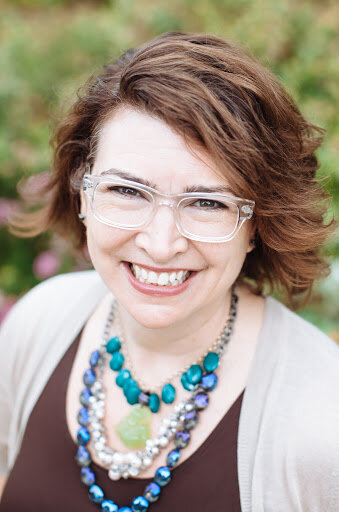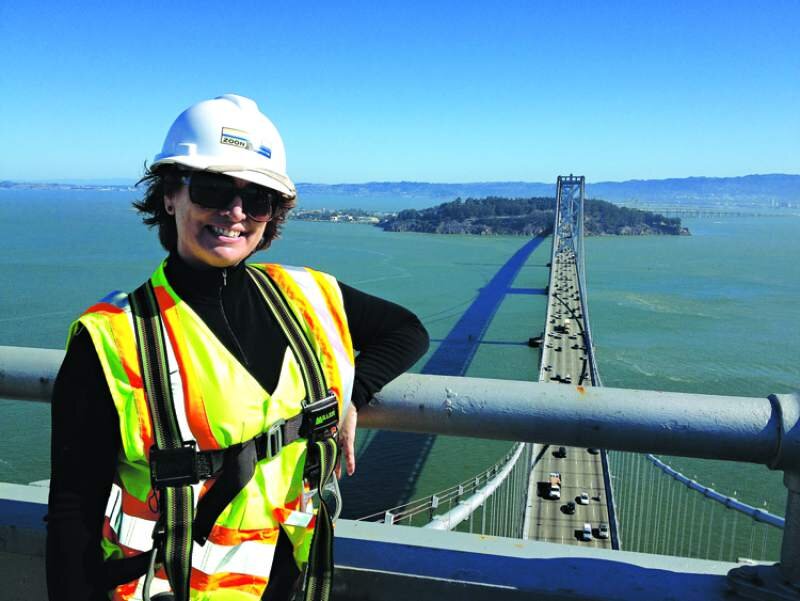Principal at AC Eclectic Creative Services Worldwide, Amy Critchett is passionate about creating cultural enterprises that inspire the creative convergence of audience, engagement, and economy. Sam gets to hear more about what makes Amy tick including:
Media as the way to change the world, create experiences for people, and let audiences think for themselves.
The appetite and need for inspirational, aspirational, and accessible creativity.
How lighting up 14 London bridges is grounded in the artists’ vision for extraordinary beauty.
Samantha Meazell: So here we have “the Amy Critchett.” She is principal of AC Eclectic Creative Services Worldwide. For the record, she's one of my best friends in the entire world. We have played together, we've worked together, we've dreamed together. She’s my people. She's people's people, too, which is why I had to interview her for For Humans’ Sake. Welcome Amy.
Amy Critchett: Thank you, my darlin’. Absolute pleasure to be here with you.
SM: So Amy, you have produced zillions of user experiences, from WIRED when you were working on all of their special projects, to your Art and Audience startup, to the production of The Bay Lights, which illuminates the San Francisco Oakland Bay Bridge. And there's this really big sort of overlap of art and technology that seem to be a throughline of your life in all that you've touched with your magic. And I wonder, sort of, how do you think that came to be?
AC: Well, magic is an important word in the story. It came to be because I was an intern at WIRED magazine, helping Jane Metcalf figure out how to do all that we needed to do to launch that magazine. My passion was publishing. I knew I wanted to be in media, I knew media was a way to change the world and to create experiences for people, for audiences to think for themselves. So when I started working at WIRED, I wasn't drawn to the technology aspect, but I was drawn to the cultural aspect of what we were doing. And we just started inventing systems and processes and content and platforms every day basically.
“I knew how important it was to be a character in the opera that was the WIRED magazine brand and that it was more than the magazine.”
So from the magazine's perspective, John Perry Barlow used to say that I was the social interface for the magazine and this is, you know, decades before social media has even entered. And so I knew how important it was to be a character in the opera that was the WIRED magazine brand and that it was more than the magazine.
Since early on in my career, I have always had a good sense that what I do is very multi-platform. If you've got a book, which is a magazine, you also have all the ways that that brand touches all of its constituents. So that’s where it started and from there I became an independent producer. Basically, throughout my career, I've gone in and out of different gigs and my through-line has been being an independent producer, which is now encapsulated in my AC Eclectic Creative Services Worldwide practice. One of the last things I did with HotWired was produce the first live web broadcast. And so as I left my time at WIRED, I was able to take that experience and leverage it into a production company where my clients were Nike and ABC Sports and Paul Allen. And I had these huge clients and it was me and my partner, and whoever I was able to pull together to make these crazy digital experiences happen.
SM: What was the craziest piece?
AC: Oh my God. Well, part of my time with Nike. At that point, Nike didn't have a universal website. Nike was a series of episodic web experiences and this is 1996, 97. I don't even remember. And so my team did the all of the branding and all the creative for nike.com, including hosting a dynamic live web broadcast that was hosted from the Prefontaine Track and Field Event in Oregon. So, of course, it was raining, and I had my little production tent set outside this huge track and field event. Luckily, the CBS truck pulled in right next door and they had their big uplink, because I was running the whole show on this generator that we got soaked overnight. And there was this major event was happening and all of these eyeballs were on Nike. I got through it with a smile, but also at that point I remember I wanted to make a t-shirt for myself, which said “I like TV, it works.” From there, I actually went into television and right in the heart of the convergence of the internet at that time and television broadcast.
SM: I really like thinking about the through-line of how something starts as a certain medium, how a magazine starts in a book-like medium and what you come in and do is think about all of the sort of tentacles of other media and technology that spreads through. And a lot of what has been important to you in the way that you're spreading those messages is the art behind it, too. The people who create the art, the people who experienced the art, the art for art's sake. I know that you and I agree that art is so important to the wellness of humans. And I'm wondering when you think about how important it is, especially now we're a bit depleted currently, how can we ensure that we all get our recommended dietary allowance of art these days?
Atop the San Francisco Oakland Bay Bridge
AC: I was writing something for a client this morning and I was touching on “the now,” which of course, the appetite and the need for inspiration and aspirational and accessible creativity is rife. But also the beauty of creativity and really my sweet spot is the artist journey, it's timeless. I like to call myself an artworker, which is the other oldest profession, right? Art has been happening since the age, since the beginning of time. So I don't think it's more valuable now than it was before, but it certainly is very valuable. And for me, there's the object or the experience or the the art itself, but it's really about those pulses that generate around it and how those pulses impact the audience.
When we were making The Bay Lights, for example, I'll never forget Leo Villareal, who you know is such a delightful and generous human. He was always very forthright about the fact that yes, indeed, this expression, this two mile expression of public art, while his vision is to integrate the environment and integrate the infrastructure, it was really to delight and inspire. In my TEDx talk, several times I talk about the fact that when I was a kid, I saw Christo's Running Fence and that left an indelible impression on me as a human. And that impression is something that I'm very passionate about replicating far and wide with the biggest audience possible. To inspire, even if you don't like the art, right? I mean, as you know, I'm married to an artist and I'm completely embedded in the agony and the ecstasy of his process. Either you love him or you the opposite of love him and his work. But it's that process that is so important and so valuable and so inspiring for those who have the honor of participating in “it”, whatever the “it” is.
The London Bridge aglow
Your current focus right now is the Illuminated River public art commission that is lighting up 14 London bridges on the River Thames. And sources tell me once it's finished, it will be the longest public art project in the world seen over 130 million times each year. So we're talking pulses. It's absolutely incredible and it's well underway, I think four of the bridges have been lit. What I wanted to hear about is thinking about the beginning when you had to pitch this whole idea, “Imagine these landmarks of the city of London being lit up.” How do you get that into people's minds and how do you describe the experience of interacting in this way with art?
AC: Very good questions. I'm going to start with backtracking to The Bay Lights. So with The Bay Lights in San Francisco, it was the idea of a creative individual, Ben Davis, who had a really vibrant creative services agency and Caltrans was one of his clients. He had this great idea and pitched to them before we knew Leo, well before he and I started working together on it. So The Bay Lights wasn't really asking permission. I mean 100% we had to get permits and a big part of my role was making sure that everything was legal and permitted and insured. But every interaction was a human exchange about making art and making art happen on the grand scale.
So fast forward to London. We, Leo Villareal Studios with Leo Villareal at the head, were awarded this commission through a competition. Leo's vision was to create this timeless, abstract art piece inspired by the rise and the fall of the tides, and all of the life and the culture happening around these bridges. And also by the masters, Monet and Whistler, who had already made these gorgeous, abstract, impressionistic images of these bridges. So as we all know, light can go all sorts of wrong really quickly, if it’s in the wrong hands—just like any paintbrush—but Leo is a master. And so because of his contextual and comprehensive understanding of his vision, we then apply at our studio bespoke software to be able to then have the system that he's able to do his actual painting with. A long story short, it's a lot of conversations. Same with The Bay Lights, if The Bay Lights wasn't extraordinary, wasn’t beautiful, which is 100% the artist's vision, then it wouldn't work. My goal, and I know how important this is, I understand the role of the artist and then you build and frame and circumnavigate around that vision to make it happen.
SM: Thank you so much for participating in this and I can't wait to see it all continue to be a light because of your work.
AC: Thank you. Thank you.
About For Humans’ Sake
If you’re passionate about making other people’s lives easier through great user experiences, you’ll enjoy For Humans’ Sake, a video series from Slide UX that curates wisdom and helpful insights from experienced product leaders in a bite-sized format.
Get alerted about new insights as they’re published. Register for our weekly newsletter, The Brief, or subscribe to our YouTube channel.




